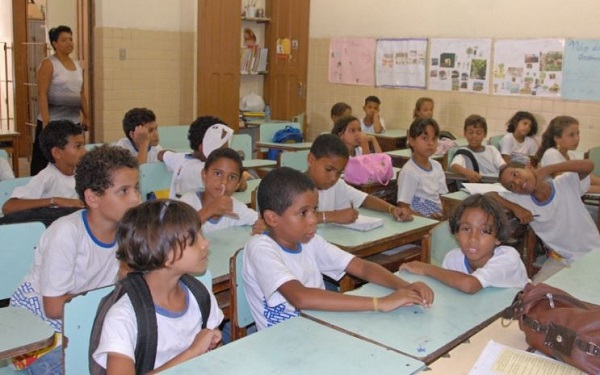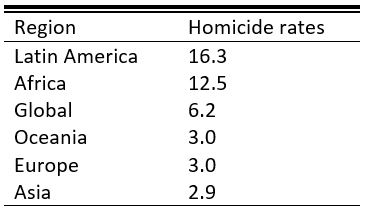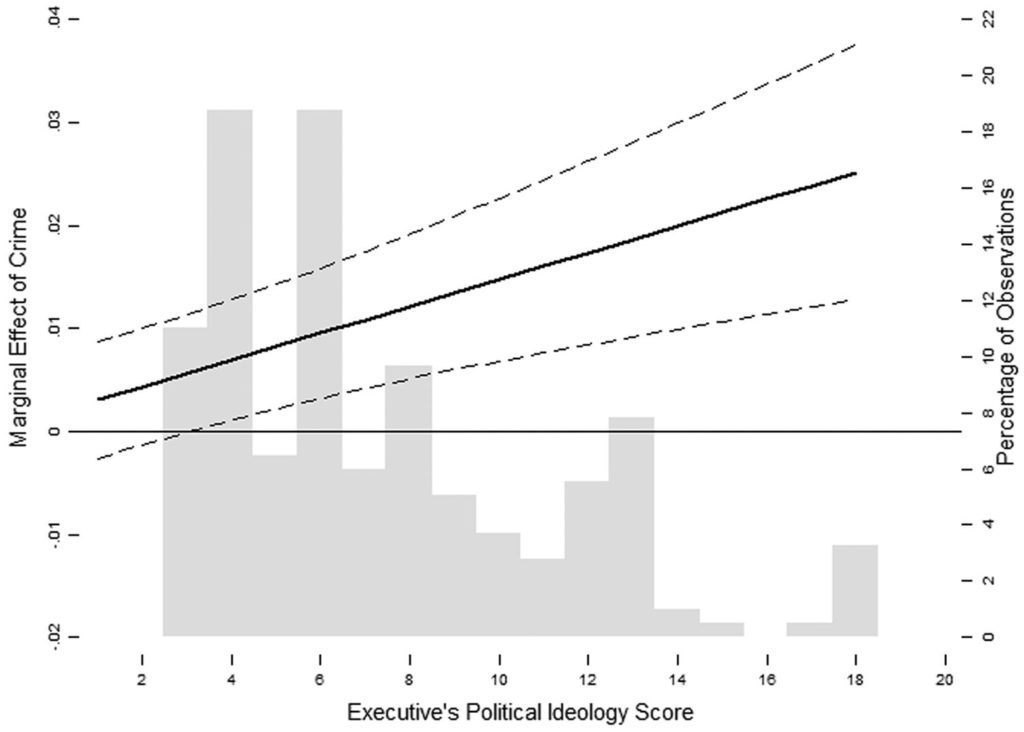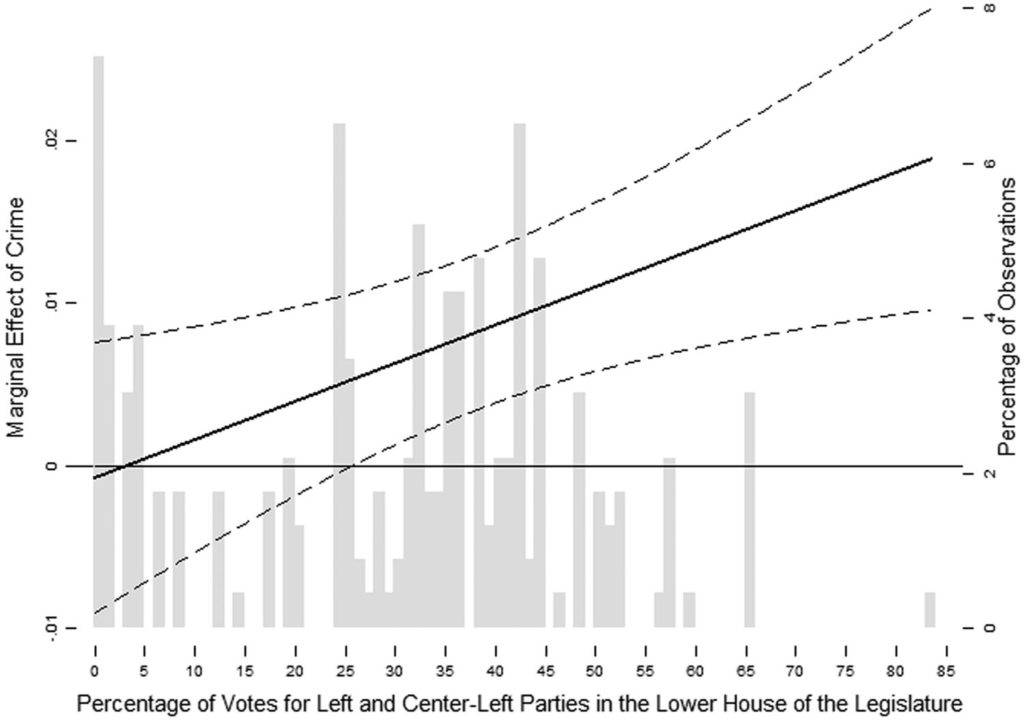Evidence from Latin America: Governments increase human capital investment in response to social violence
Mauricio Rivera and Bárbara Zárate-Tenorio argue that democratic governments have incentives to advance human capital since the youth population is overrepresented in acts of social violence. Drawing on data from eighteen Latin American countries, they show that governments increase spending on education in response to increasing levels of social violence. They also find that political ideology plays a role in shaping the government’s strategies to combat violence, with left-wing executives investing more in education than right-wing ones. These and other soft strategies can outperform heavy-handed security policies that not only hinder human rights and the quality of democracy, but also have tended to fail in reducing crime and violence.

A school in the Northeast region of Brazil. Credits: Escola Duarte Coelho (CC BY 2.0)
In the past decades, Latin America has been one of the most violent regions in the world, although there is great variation in the levels of social violence both within and between countries. The Global Study on Homicide 2013 of the United Nations Office on Drugs and Crime indicates that Latin America has the highest homicide rates worldwide, with 16.3 homicides per 100,000 inhabitants – ten homicides higher than the global mean. It is thus not surprising that public insecurity ranks at the top of citizens’ social concerns, and that a large share of the population often supports the so-called mano dura (‘heavy-handed’) responses to crime and violence.
Table 1. Homicide rates per 100,000 inhabitants (2012 or latest year)

Source: Global Study on Homicide 2013 (UNODC 2014)
Many scholars and NGOs have been concerned with the nature and effectiveness of the coercive responses that democratically elected governments implement to maintain order and guarantee citizen security. Academic and non-academic assessments on this topic tend to emphasize that elected governments in Latin America resort to a variety of coercive tactics against criminality, ranging from law enforcement policies that increase the number of police personnel, support training of judicial actors and the security apparatus, and increase the severity of punishment, to heavy-handed policies that promote discretionary actions, violations of due process rights and participation by the military in policing activities.Source: Global Study on Homicide 2013 (UNODC 2014)
In a recent study, we analyze if national governments from the region exclusively employ coercive strategies against crime, or if they resort to alternative strategies beyond law enforcement and mano dura. Specifically, we analyze whether and under what conditions governments employ alternative non-coercive strategies against crime. The main idea driving our analysis is that elected governments have incentives to advance human capital, given that the youth population – particularly male – is generally overrepresented in acts of crime and social violence. Put in a different way, political authorities are often aware that young males are the main perpetrators of social violence, and thus expect that efforts to improve human capital formation can decrease actors’ likelihood to participate in criminal activities.
Using data on homicide rates and education spending as a percentage of GDP for eighteen countries (1990 – 2007), as well as taking into account potential issues of reverse causality, we found that governments increase education expenditures in response to increasing levels of social violence, suggesting that non-coercive strategies are also employed to improve citizens’ security. A key finding in our study is that political ideology plays an important role in shaping governments’ strategies to fight crime and violence. We show that the effect of homicide rates on education spending becomes stronger when a left executive is in power. Similarly, this result holds when we consider the vote share for leftist parties in the lower house of the legislature (see Figure 1).
Figure 1. Marginal effect of homicide rates on education spending at different values of executive’s ideology (top panel). Marginal effect of homicide rates on education spending at different values of the percentage of votes for leftist parties in the lower house of the legislature. Ideology scores from Baker and Greene.


The findings of this study provide a few glimmers of hope. Recently, Rivera has shown that states’ efforts to increase school enrolment can help reduce violence in Latin America. As such, non-coercive anti-crime strategies that endorse higher investment in education can contribute to reduce criminality and improve public safety. In the medium- and long-run these kind of “soft” policies against crime are likely to be more effective than heavy-handed policies that not only hinder human rights respect and the quality of democracy, but also tend to fail in reducing crime and violence. The study also finds that government efforts towards strengthening the judicial system tend to improve public security. This suggests that mixing government tactics (i.e. improving the educational system and bolstering the judicial system) can help to improve the rule of law. As Tony Blair once summarized, “tough on crime, tough on the causes of crime”.
Of course, the success of education spending in reducing levels of crime and social violence in the region largely depends on states’ capacity to increase school enrolment rates and improve the quality of the educational system. The effectiveness of education expenditures involves major challenges, as we know that in many countries a high share of education spending is absorbed by the bureaucracy and thus have little impact on how the educational system works. A second concern is linked with political cycles. We have found that political ideology matters; hence, changes from left- to right-wing executives are likely to inhibit consolidation of “soft” policies against crime.
To sum up, despite substantial challenges, an emerging body of social science research (among others: Moncada; Hoelscher and Nussio; and Bertheleon and Kruger) suggests that non-coercive strategies against crime have a prominent role in the states’ toolkit to secure law and order, and such tactics have potential to build peaceful societies. These strategies outperform mano dura policies that have failed in reducing crime and violence and also hinder human rights conditions.
—
This post represents the views of the author and not the position of the Democratic Audit blog, or of the LSE.
—
Mauricio Rivera is assistant professor of political science at the Centro de Investigación y Docencia Económicas (CIDE), México. Email: mauricio.rivera@cide.edu.
Bárbara Zárate-Tenorio is assistant professor of international studies at the Centro de Investigación y Docencia Económicas (CIDE), México. Email: barbara.zarate@cide.edu.





 Democratic Audit's core funding is provided by the Joseph Rowntree Charitable Trust. Additional funding is provided by the London School of Economics.
Democratic Audit's core funding is provided by the Joseph Rowntree Charitable Trust. Additional funding is provided by the London School of Economics.
Evidence from Latin America: Governments increase human capital investment in response to social violence https://t.co/mztPdWcYNN
https://t.co/IatrN81NYZ Evidence from LA: Governments increase human capital investment in response to social violence.
https://t.co/h9eW51JoyH Evidence from LA: Governments increase human capital investment in response to social violence @IrvinWaller
Dos egresados de #FlacsoMéxico Mauricio Rivera y Bárbara Zárate-Tenorio afirman que los gobiernos democráticos… https://t.co/6LbaJVepIO
Dos egresados de #FlacsoMéxico Mauricio Rivera y Bárbara Zárate-Tenorio afirman que los gobiernos democráticos… https://t.co/7k40XBOebo
Evidence from Latin America: How investing in education can decrease social violence https://t.co/rKsurnSXZ2
#LATAM #education #children #capital #investment #development #evidence @oppenheimera https://t.co/uLhNFvOSH0
@pipebog: #LATAM #education #children #capital #investment #development #evidence @oppenheimera… https://t.co/jIAOHqdQjG
Violencia y gasto en educación en América Latina | Mauricio Rivera y Bárbara Zárate en el blog Democratic Audit UK https://t.co/xvtD4E4RQB
In response to social violence, soft strategies can outperform heavy-handed security policies. https://t.co/rJrBUU5D01
Human capital investment and violence in Latin America https://t.co/pMYCRq67jP por Profes Zárate-Tenorio y Rivera https://t.co/pAXExVuxoj
“Governments increase human capital investment in response to social violence” https://t.co/pMYCRq67jP por Profes Zárate-Tenorio y Rivera
Evidence from #LatinAmerica : How investing in education can decrease social violence? https://t.co/wcszPJ6g7U
[…] violence, specifically in Latin American countries. As per the study (brief summary found here: https://www.democraticaudit.com/?p=24243), Latin America has the highest homicide rates in the world, and by implementing the strategy to […]
Evidence from Latin America: How investing in education can decrease social violence : Democratic Audit UK https://t.co/GMlYYTUkVV
Evidence from Latin America: How investing in education can decrease social violence – Democratic Audit UK https://t.co/13l3JP0810
Evidence from Latin America: How investing in education can decrease social violence https://t.co/GMlYYTUkVV
Evidence from Latin America: How investing in education can decrease social violence – Democratic Audit UK https://t.co/96M55mlXp6
Evidence from Latin America: How investing in education can decrease social violence https://t.co/lgGSsMGpNn https://t.co/tDNJxSrm75